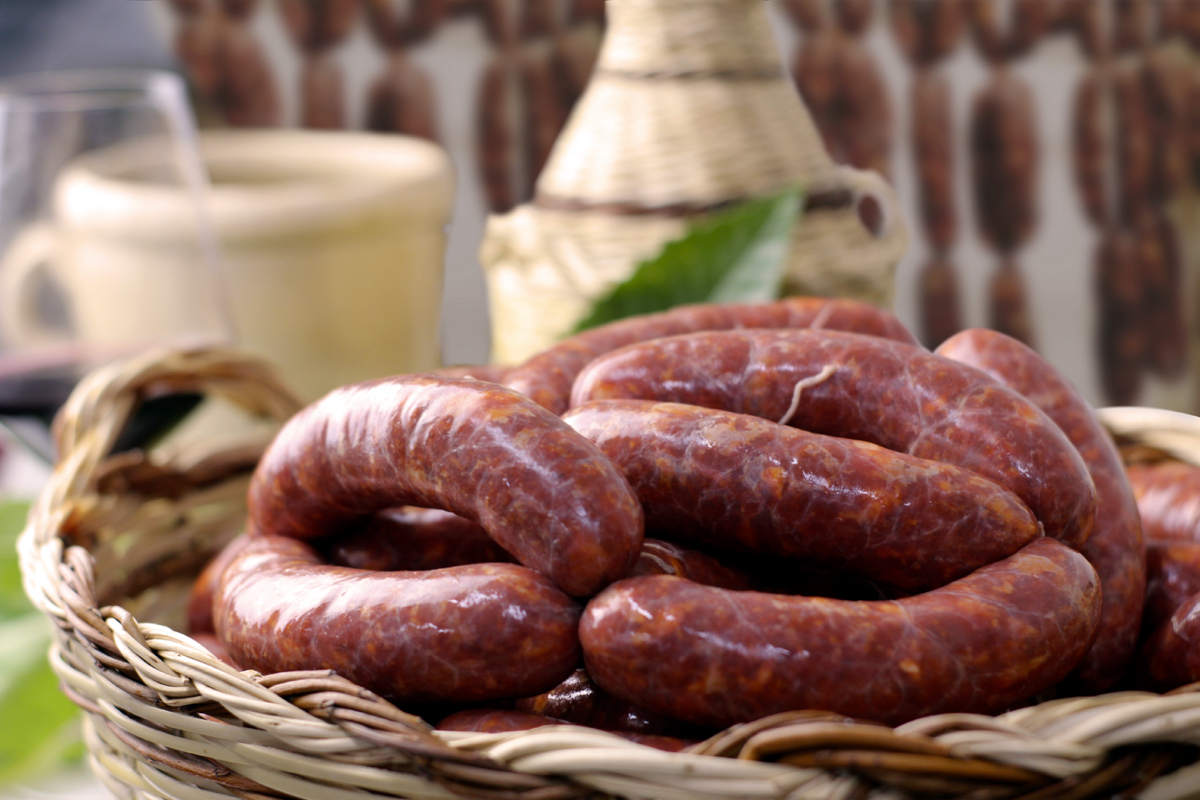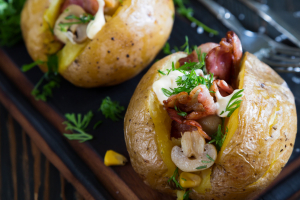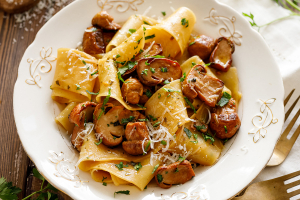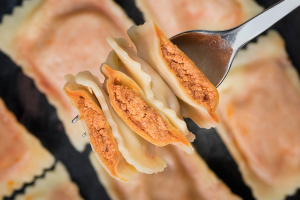Calabrian Sausage: history and development

History and anthropology of the Calabrian Sausage
We do not know precisely the area of origin of the pig; some fossils date the species to Central Asia but then it spread all over the planet. The Palaeolithic hunters already hunted the kin of the current pig species to testify the interest for this animal meat. A relationship that is lost in the mists of time when our ancestors already described this animal in their caves. The preservation through salting and maturing of pork is almost certainly an Italian invention, near Mantua were found Etruscan settlements of 2500 years ago that leave us thinking of a process of salting and smoking of meat that was supposedly sold in the Athenian market.
Some centers of Calabria were among the most advanced colonies of Magna Graecia and it is certain that the consumption of cured meats developed on the Athenian model, creating one of the most advanced market of the time, populated by the most civilized and sophisticated people of the ancient world. It is in this historical context that the production of the Calabrian sausage is rooted, which is still today a distinctive element of culture and tradition, linked to liturgies that begin with the killing, pass through the preparation and culminate in the consumption of the product. The preparation of cured meats and in particular of the sausage is an anthropologically revealing moment in the culture of Calabria. The elegant and harmonious cut of the seasoned sausage on the cutting board with a sharp blade is an identifying moment for the Calabrian people.
Traditional sausage processing
Sausage processing methods are handed down orally from generation to generation and takes place through observation and repetition of millennial procedures. Until the 80s, in many small towns of Calabria, pigs were slaughter by many families in their very own garden, and the preparation of sausages was a common ritual for everyone. This productive model offered, although there were conformity in the preparation, different tastes of the salami that differed from family to family, from ward to ward, from country to country. Therefore, there is not a unique Calabrian sausage but a myriad of familiar interpretations of the product.
Traditionally, sausage is prepared through the selection of appropriate meats that are finely cut, salted and flavored with spicy red pepper. The whole process is carefully supervised by the hands of the elders, custodians of tradition and techniques. Later, the spicy meat is stuffed into the washed and dried casing, closed with a string to create a natural vacuum and placed in a basket; sausages are ready to be hung in a chain made of dried reeds. After two nights, it is time for the smoking process that can be done with beech or pine, but also oak or olive, according to availability. This gives the sausage a characteristic and evocative fragrance. Sausage remains hung to dry and season for at least 2 months, after which it can be consumed or put in jars filled with pork fat or oil, in some cases even in wheat or ashes to allow and extend conservation. Today, with the omnipresence of plastic, sausage "strings" or "stocchi" are kept under vacuum. It remains unexpressed and superstitiously does not refer to the fact that, if mistakes have been made in this process, sausage can be marred with great economic damage for a rural Calabrian family. An investment gone wrong at the time could lead to hunger. Sausage processing in Calabria was a serious business, so serious as to require the involvement of the head of the family throughout the production process.
Modern sausage production
At the beginning of the ‘900 and especially after the second world war, in Calabria there was a generally spread of butcher shops that produced salami, particularly the fresh sausage. It is not seasoned and must be cooked in order to be able to enjoy its taste. Particularly appreciated when used in tomato sauce to season macaroni, on the grill or in the pan to make one of the traditional dishes of Cosenza: broccoli of turnips with sausage. The fresh sausage is often bought in trusted butcher shops that preserves an artisanal production process, while the family production remains for the sausage destined to seasoning.
In the 90s with the application of legislation that regulates the slaughtering of pork and other causes such as depopulation of countries and urbanization, the practice of preparing cured meats at home has greatly reduced, leaving much room for butcher shops. The domestic market still has a very strong demand for sausages and the sausage factories in many cases operate following the tradition, but with the introduction of industrial production models, trying to preserve a result as close as possible to the traditional sausage. Our website bottegadicalabria.com was founded with the intention of offering the public the flavors of the past, drawing only on producers able to work in a traditional way and to offer a sweet or spicy sausage as simple as that of the past, without the use of techniques that would flatten the flavor by making it industrial. The ambition is to expand the sausage market in Italy and around the world, preserving and stimulating those virtuous producers who maintain a healthy, ethical and genuine production model because these workers not only deserve to survive but to proliferate. Encouraging a market with a healthy production chain, we support not only the economy but also the consumer who has the right to taste the Calabria sausage at its best.





